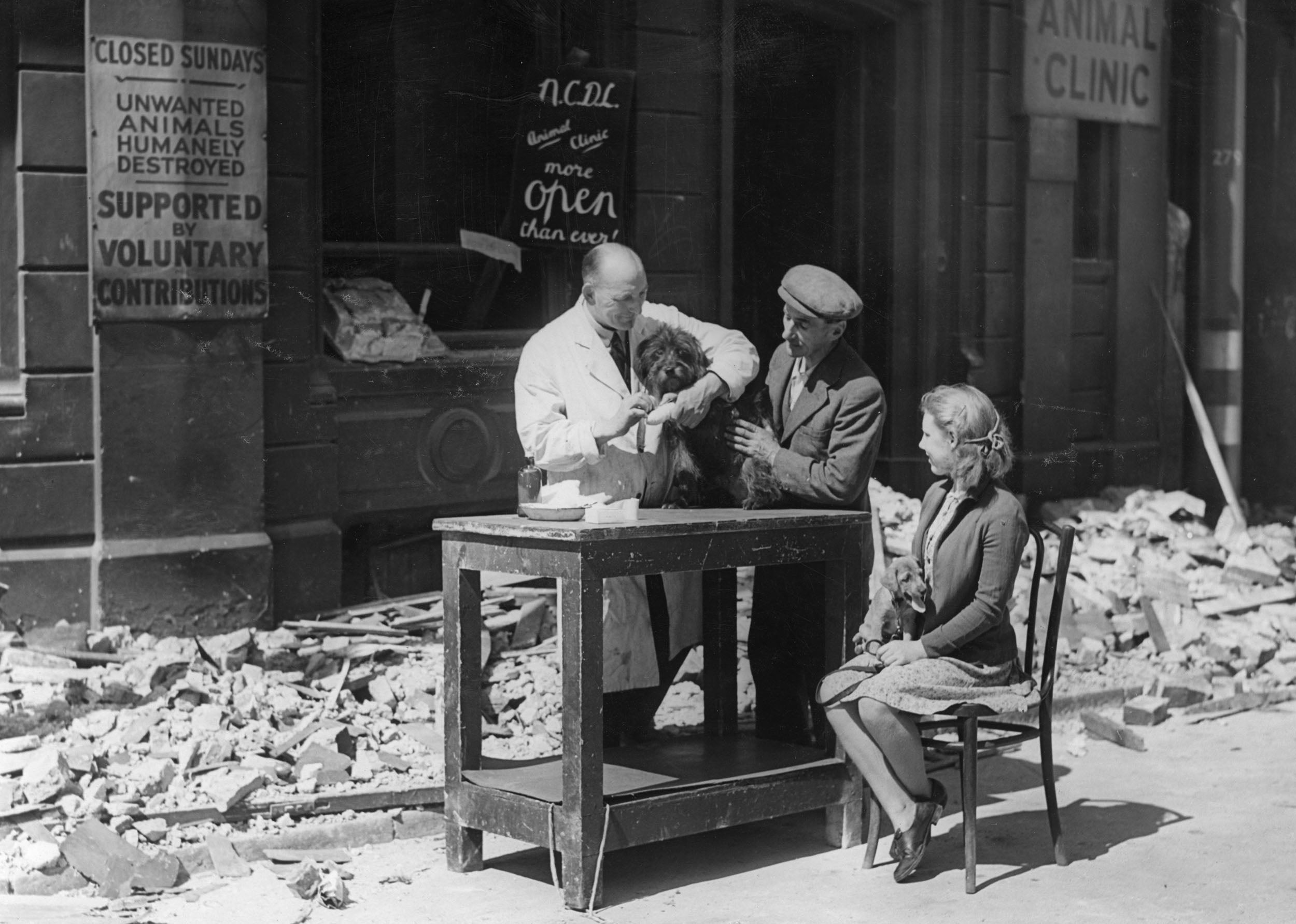Remembering the British 'pet holocaust': WW2's slaughtered cats and dogs
A new book, ‘The British Cat and Dog Massacre: The Real Story of World War Two’s Unknown Tragedy’ tells the heartbreaking, but little-known, story of the 750,000 dogs and cats euthanised upon the outbreak of WW2

A very sad episode in British history would have almost passed me by if it had not been for author Hilda Kean writing her book The British Cat and Dog Massacre. Kean tells the story of the reported minimum 750,000 cats, dogs and other pets that were tragically euthanised mostly upon the announcement of the Second World War in September 1939 in response to a hysteria created in anticipation of air raids and resource shortages. Following Neville Chamberlain’s declaration of war against Nazi Germany, a silent holocaust of pets was to take place.
Formerly beloved pets, dogs, cats and other animals, were killed by their owners. Long queues formed in an orderly fashion outside countless vet practices throughout the country, dogs on leads and cats in cages, unaware, and uncomprehending, of their sad fate. Afterwards, the pets’ corpses lay in anonymous heaps outside the vet practices that only weeks before had been used to care for their health and wellbeing. So much was the sad intent fomented in the popular imagination, and carried out with dutiful purpose, that it’s estimated that in London alone between 400,000 and 750,000 pets were euthanised during the first week of war being declared.
So sudden and widespread was the slaughter that The National Canine Defence League (NCDL) ran out of chloroform stocks. The incinerators at the People’s Dispensary for Sick Animals ground to a halt with the sheer volume of corpses. The charity provided a meadow in its grounds in Ilford as a pet cemetery, where about 500,000 animals were buried, many from the first week of the war.
Kean, a child of the Second World War, recalls first reading of Britain’s “pet Holocaust” in a work by Angus Calder called The People’s War. He wrote: “At the start of the war, there was no stoning of dachshunds in the streets. But a holocaust of pets occurred as homes were disrupted; outside vet’s surgeries ‘the slain’ lay in heaps.”
In another book, the author ES Turner, talks of the holocaust of pets in the first month of the outbreak of war, stating that it was “unnecessary from any standpoint”. At the time, the NCDL described the mass slaughter of the animals as the “September Holocaust”. The word “Holocaust”, which is usually taken now as a noun to mean the mass slaughter of Jews, was, Kean says, a contemporary phrase used to describe sacrifice or massacre on a large scale. Its later meaning was only applied to the Holocaust of Jews from 1942.
Kean points out that the mass killing of pets was an action created and distilled by hysteria. It was mostly opposed by the government, veterinarians and animal charities of the time. Animal shelters like Battersea Dogs and Cats rallied to take in as many pets as they could, with that home alone rescuing more than 140,000. Other charities, such as Wood Green animal shelter, gave sanctuary to many thousands of dogs and cats, while kindly individuals took in pets in spite of their own fear and uncertainty in the wake of war. Some of the killing was done by the pet owners themselves, fearing a shortage of rations, and compelled by a sense of misguided “national duty”.
Many others at the time were moved by a feeling that their beloved pets would be “better off” being put down before bombs rained down, and they were cowed by fear, or worse. It was a feeling of almost apocalyptic dread among a nation that had lived through the destruction and deprivations of a world war only a generation before. To add to the hysteria, the government’s National Air Raid Precautions Animal Committee had, shortly before war’s outbreak, issued an advice pamphlet stating that if animals could not be rehomed, then it “really is kindest to have them destroyed”. Despite the government, media, animal charities, and others later coming together to urge people not to harm their pets, a panicked nation chose en masse instead to lead their beloved pets into the jaws of death.
This mass slaughter of pets is a tragic, and shameful, episode in British history, that has strangely, in our pet-loving country, largely been forgotten; a closed chapter in British history, and a very sad episode in the “People’s War”. It seems that a collective shame has pushed the tragedy out of people’s minds, as if in the hope that it should never be mentioned again. Many people later regretted killing their pets; and perhaps we should have some sympathy for a nation gripped by a panic that we can only dimly imagine today.
‘The British Dog and Cat Massacre: The Real Story of World War Two’s Unknown Tragedy’ by Hilda Kean is published by the University of Chicago Press, and is available from Amazon, and other book stores, priced £19.95 for the hardback edition
Subscribe to Independent Premium to bookmark this article
Want to bookmark your favourite articles and stories to read or reference later? Start your Independent Premium subscription today.

Join our commenting forum
Join thought-provoking conversations, follow other Independent readers and see their replies